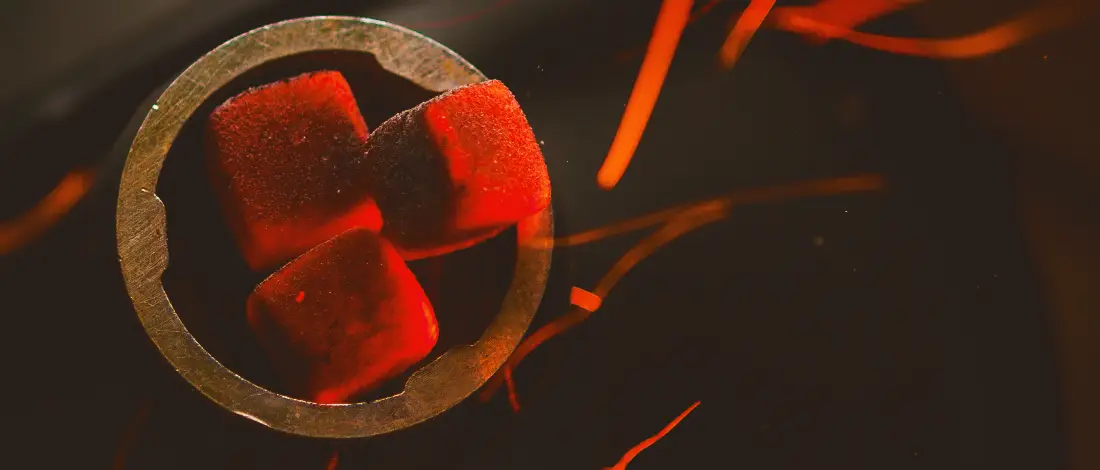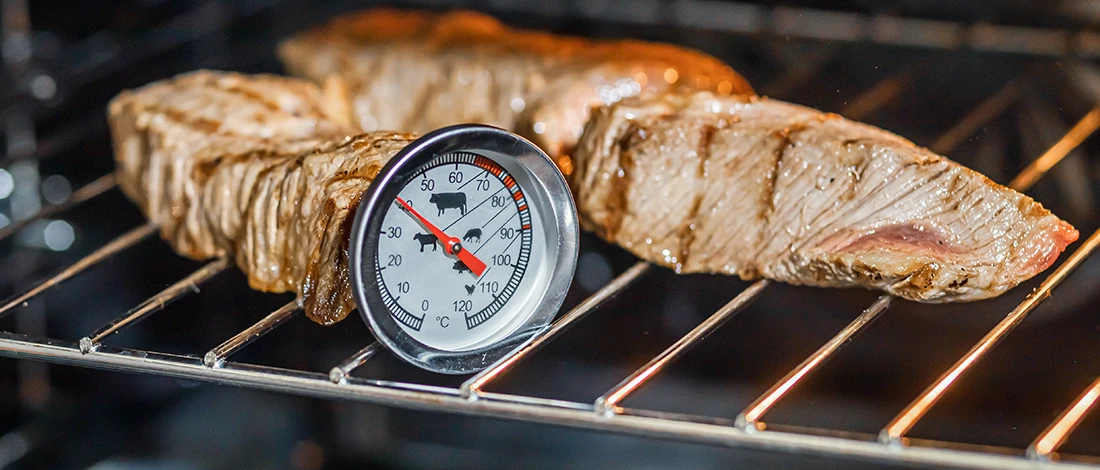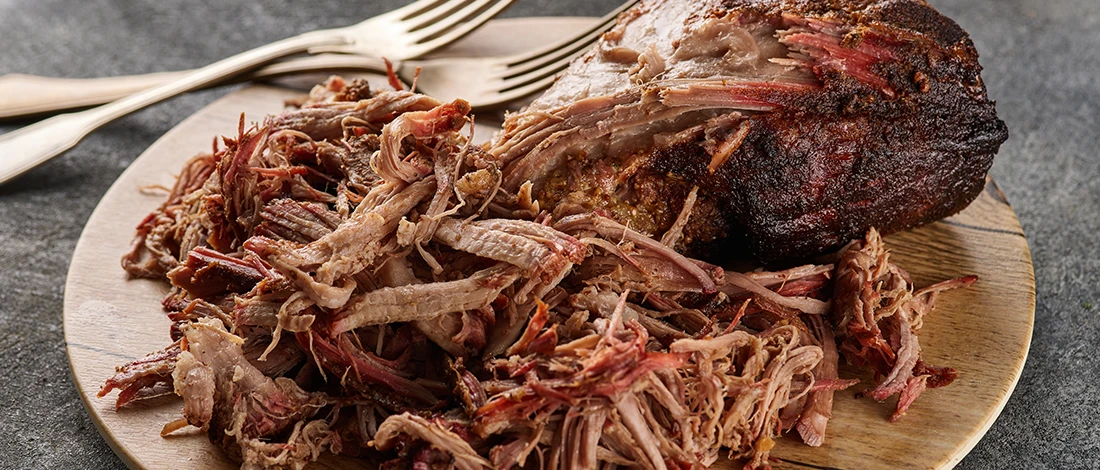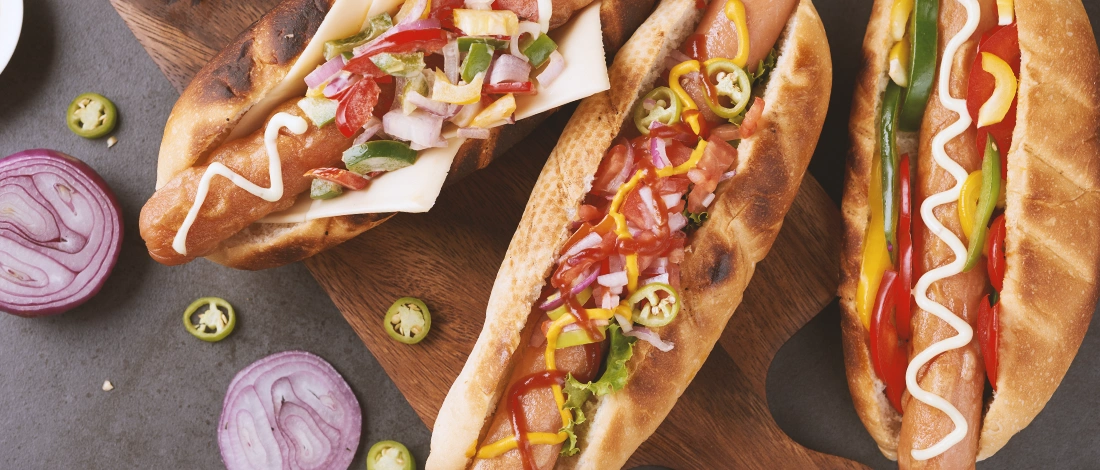As a seasoned grilling enthusiast, I've encountered my fair share of challenges when it comes to achieving the optimal temperature on a charcoal grill.
I wanted to gain better control over the heat levels and ensure a successful grilling experience, so I consulted BBQ pitmasters and spent weeks researching how to control the temperature on a charcoal grill.
I tried every single piece of advice I came across to find out what works best.
Here’s my list of tips on controlling your grill’s temperature, so you’ll never struggle to control the heat again.
Quick Summary
- There are many ways to control the charcoal grill heat, such as using a charcoal chimney, changing the charcoal position, opening or closing the lid, and more.
- A good temperature probe helps keep the grill temperature stable.
- More air will make the coals burn hotter, and less air lowers the heat.
6 Tips on Controlling Charcoal Grill Temperature

To help you find the perfect grill for your needs, we have compiled a list of beginner-friendly grills where we've carefully selected a range of charcoal, gas, and electric options to suit different preferences and budgets.
Here’s how to control heat on your charcoal grill for the best cooking results.
1. Distribute Coals Evenly
The way you arrange the coals and place the food on the grates is one of the easiest ways to control the temperature.
To ensure an even temperature, arrange the coals evenly over the grill grate before you light the coals.
Don’t be lazy and just pile the coals without careful positioning. In case a lot of your coals fall into one place, use tongs to move them around.
Overall, coal distribution is the best way to control the temperature when starting the grill.
However, keep in mind the heat you need for searing steak isn’t the same as for smoking a pork butt, so check out the following tips for the best results.
2. Choose the Right Amount of Charcoal
Another important charcoal-related tip for controlling the temperature is choosing the right amount of charcoal. Generally, the more charcoal, the hotter the grill.
Charcoal is at its peak temperature and most stable when fully lit.
Over time, the lit charcoal temperature goes down as the combustion process consumes fuel.
You should only add more charcoal when the temperature starts going down.
Also, don’t add unlit coals, as this will spike up the temperature as the charcoal ignites and builds up the temperature.
The key to adding lit coals is carefully watching the grill heat.
As soon as the temperature starts going down, light the coals, wait for the lit coals to ash over, and then add them to the grill. You may need to do this several times during the cooking.
“It can be a lazy route to pour in even more coal, but all this will achieve is a higher temperature and burn the food when you cook on a charcoal grill, which might not be what you’re looking for; one layer will do the trick.”
- James Craner, The Grill Brothers
3. Build a Two-Zone Fire

Another effective way to control the temperature on charcoal grills is to create a two-zone fire.
As the name says, you create two zones for cooking: one side of the charcoal grill has high heat, and the other uses indirect heat.
Essentially, you divide the grill into sections. Once you have a hot zone and a cooler zone, you can move the food accordingly.
For example, use the hot side for searing food and a cooler zone for a low and slow cooking process.
Here’s how to create two zones to control heat:
- Place all your coals on one side of the coal grate.
- Spread the coals evenly across one half of the grill, and leave the other half empty.
- Place the cooking grate over the coals.
This way, food in the indirect heat will be cooked by convection, which is warm air circulating around the food [1].
Overall, having a hotter fire on one side, and an indirect heat side, helps you achieve consistent temperature.
You have more control over the oxygen flow, which means better temperature control.
Plus, you have more flexibility to move the food around and cook different types of food at the same time.
4. Adjust the Grill Vents
The rule is more oxygen=more temperature. You control the airflow by adjusting the vents. This works differently than on gas grills, where you let out the heat if you open the vents.
Charcoal grills have two types of vents:
- Intake damper - Found near the bottom of the grill and is close to charcoals.
- Exhaust damper - Found on top of the grill and lets gases escape.
You use the intake vent to control the temperature.
The more oxygen goes through the intake damper, the hotter the charcoal and the hotter the fire.
Also, you can close the vent to lower the heat as needed, lowering the system's oxygen. Keep in mind a completely closed intake damper will starve the fire of oxygen and can completely extinguish the fire.
Notice I talked a lot about intake dampers. This is because this is the main damper for adjusting the heat.
Generally, you shouldn’t adjust both the intake and exhaust vents at the same time.
Try to adjust the intake damper first, and if this doesn’t help you reach the desired temperature, adjust the exhaust damper.
That being said, Weber recommends leaving the bottom damper completely open and controlling the temperature using the exhaust damper [2].
According to them, these are the correlations between the exhaust damper and temperature:
- High heat - Fully open damper, 450 to 550 degrees
- Medium heat - 1/2 open, 350 to 450 degrees
- Low heat - 1/4 open, 250 to 350 degrees
- Low and slow cooking process - 1/4 to 1/8 open, 225 to 275 degrees
- Off (no heat) - Fully closed
Overall, it’s best to experiment. Try leaving the exhaust vent open and adjusting the intake vent, and vice versa, to find out what works best for your charcoal grill.
5. Get a Grill Shield

A grill shield is a great way of controlling the temperature when the food is cooking quickly, and you need to do something about it fast.
You can use aluminum foil to block the heat.
Here’s how to make a shield with aluminum foil:
- Grab some aluminum foil
- Fold it at least three times
- Place the foil under the food that’s about to burn
This blocks the direct heat from hitting the food, which slows down the cooking process.
6. Use a Lid
Finally, you can also use the lid to control the temperature. Leave the lid open and sear the food on direct heat.
Then, you can move the food away from direct heat and close the lid for a cooler fire.
This method will cook the inside of the meat without burning the outside.
Also, opening the lid often will make oxygen rush into the grill, and you risk burning your food.
Keep the lid closed for a stable temperature so the food cooks properly. Only open when it’s time to flip or remove the food.
4 Tips for Controlling Heat in Low & Slow Grilling
Here’s how to control the grill’s temperature when cooking low and slow:
- Close the air vents to starve the grill of oxygen and lower the temperature.
- Place the charcoal on one side to get a cooler zone.
- Adjust the grate so the food is farther away from the lit charcoal.
- Light small amounts of charcoal, and then add unlit coals. The lit charcoal will gradually light up the unlit one, and you’ll have lower heat.
4 Tips for Controlling Heat in High-Heat Grilling
Here’s how to control the grill’s temperature for high-heat cooking:
- Light charcoal on one side, so the grill heats mostly on this side.
- Open the vents to get more air into the grill.
- Use lump charcoal as it burns hotter.
- Clean the grill vents and grates so there’s nothing obstructing the heat from reaching the food.
Related Articles:
FAQs
How Do You Keep a Charcoal Grill at 225 Degrees?
You keep a charcoal grill at 225 degrees by lighting about five coals and adjusting the vents. Experiment with keeping the intake and exhaust damper open or partially closed. The more air goes into the grill, the hotter it’ll be.
What Is the Best Temperature for a Charcoal Grill?
The best temperature for a charcoal grill depends on whether you want to grill at high or low heat. Keep the temperature at 400 to 450 degrees for high heat and 200 to 250 for low heat.
How Long Should Charcoal Stay Hot?
How long charcoal should stay hot depends on the type of charcoal you use. Lump charcoal should stay hot for up to six hours, and briquettes can stay hot for up to ten hours.
References:
- https://www.machinedesign.com/learning-resources/whats-the-difference-between
- https://www.weber.com/US/en/blog/burning-questions/weber-26187.html







